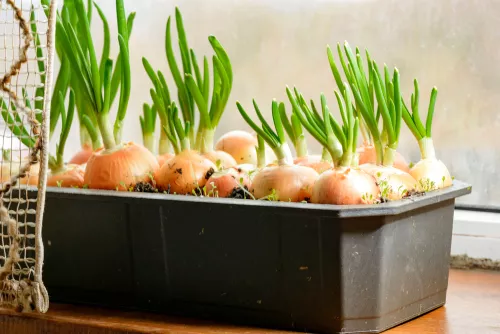Preparing young plants is becoming increasingly popular and sowing can begin as early as February. In the heated greenhouse or on the windowsill, for example, onions can be grown alongside other vegetables.
 Preparing the onions has several advantages
Preparing the onions has several advantages
Sow onions at the end of February
If the temperature in the greenhouse or in the bedroom is between 16 and 18 degrees, the conditions are favorable for sowing various vegetable seeds. Onion seeds can also be placed in the ground in suitable containers.
- Fill the pots of a propagation tray with nutrient-rich soil.
- Press the soil down well.
- Using a chopstick, poke five to seven small holes in the soil.
- Put a seed in each hole.
- Cover the seed loosely.
- Water the seeds and keep the soil moist.
The first little plants will sprout after about ten days. Six to eight weeks later, the young plants reach the "three-leaf stage", i.e. the third leaf develops.
Cultivate young onions
At the end of March/beginning of April, possibly a little later, the small bulbs can be planted out when their third leaf has developed. Now it's time to plant the young seedlings in a suitable place where they can develop into real bulbs undisturbed until autumn.
location and soil
Onions like sandy, humus-rich and light soil. The optimal location should be sunny. It is advantageous if the soil is not freshly fertilized, but has been prepared accordingly long before planting out. Too much fertilizer would allow the onions to grow, but mainly leaves would develop and no tubers or only very small tubers would develop.
maintenance
Regular watering is important during the growth phase. In addition, emerging weeds should be carefully weeded when loosening the soil.
Young onion plants are often attacked by the onion fly or the leek moth. So that the pests don't get a chance, the culture is covered with fine protective nets.